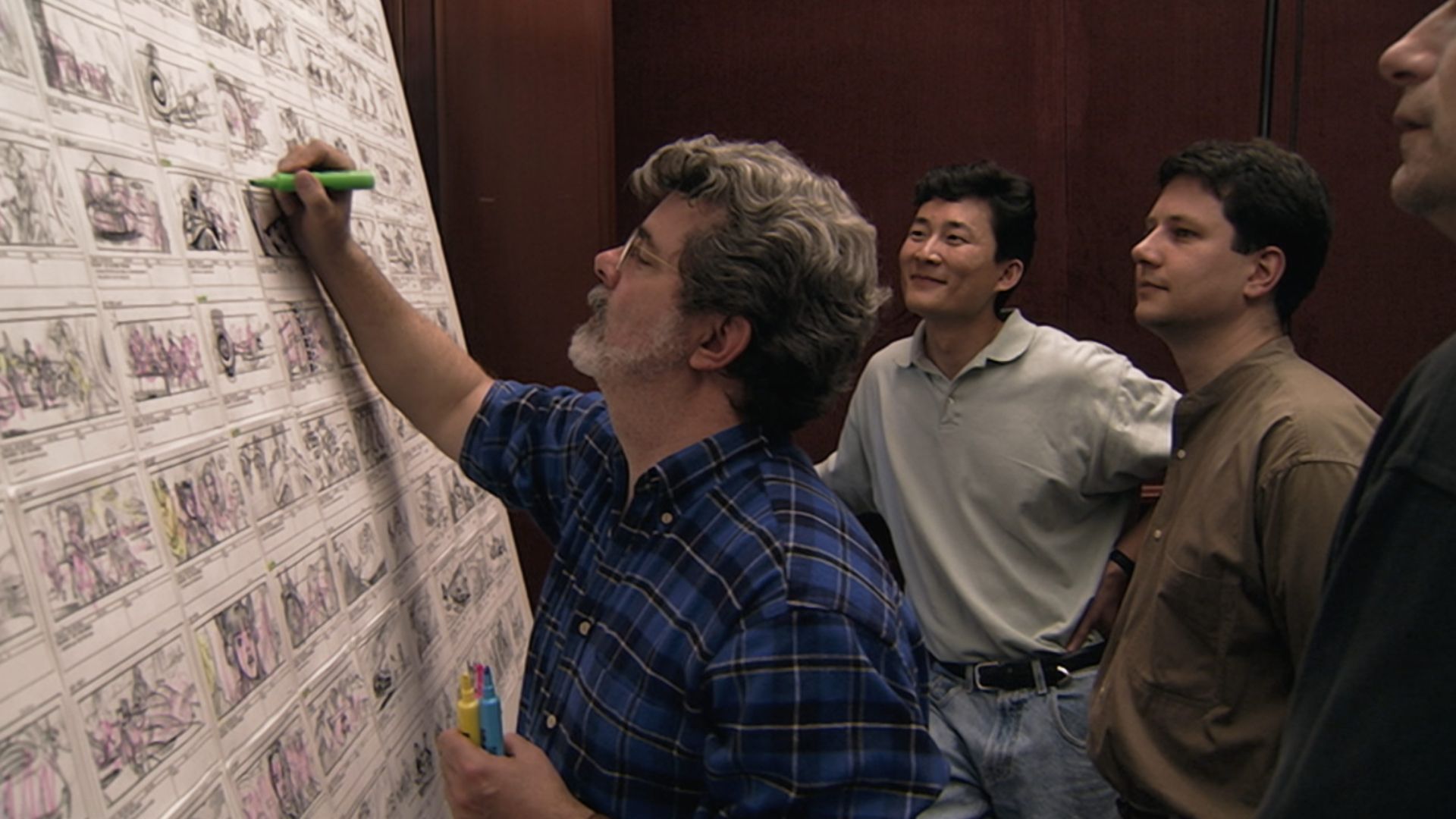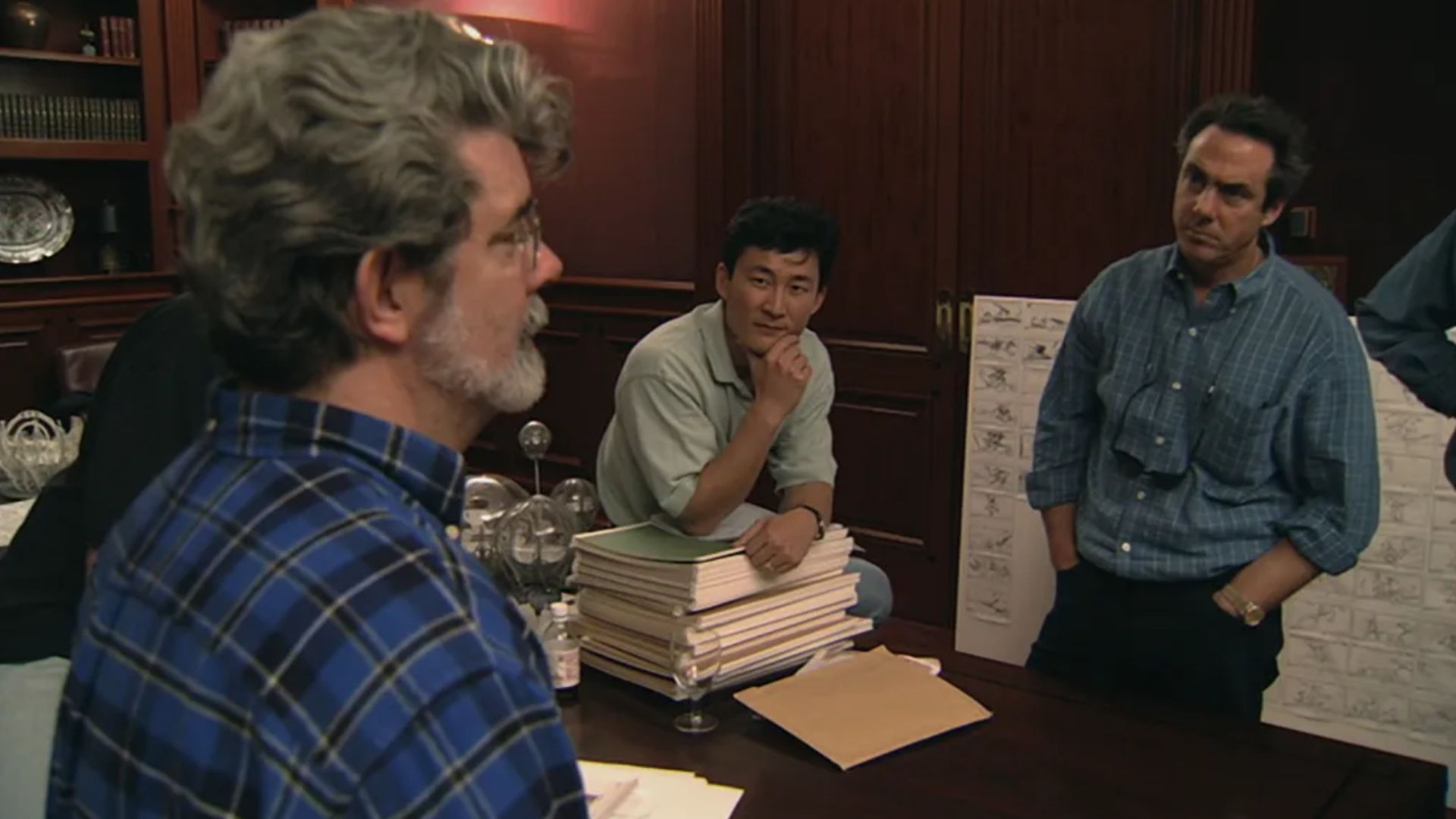
In the finale of Light & Magic’s second season, renowned Star Wars animation director Rob Coleman echoed George Lucas’ words: “ILM (Industrial Light & Magic) was established to achieve the seemingly unachievable.” This sentiment truly embodies the extraordinary feats accomplished by the visionaries at Hollywood’s premier visual effects, sound, and computer animation company. They developed groundbreaking technologies that didn’t previously exist and seamlessly integrated them into storytelling, revolutionizing the boundaries of human entertainment.
Filmmaker Joe Johnston, who made his mark at Industrial Light & Magic (ILM) as an artist and technician on the original “Star Wars: A New Hope,” propels the legacy of this groundbreaking studio into the contemporary era through his innovative work in Computer Generated Imagery (CGI) and digital effects. The second season of “Light & Magic” resumes in the mid-’90s with an episode titled, “Are We Ready for This?” By this point, ILM had already garnered immense success with blockbusters like “Jurassic Park,” “Forrest Gump,” and “Casper,” featuring the first fully computer-generated main character. At this time, George Lucas believed it was the right moment to create new Star Wars films, but there was a significant chasm between his creative vision and the practical world.
An Empire of Dreams
Introducing Doug Chiang, then Lucasfilm’s Creative Director, who was responsible for creating the new characters, vehicles, and planets for Star Wars: The Phantom Menace. At the heart of the narrative was an amusing alien character named Jar Jar Binks. Multiple versions of Jar Jar Binks led to a long-limbed, humanoid amphibian who often finds himself in tricky situations. Actor Ahmed Best, who was part of Stomp troupe in San Francisco at the time, landed the role with his side-splitting vocal performances and exceptional physical acting skills.
In an unprecedented move, a team led by best-in-class ILM employees, among them John Knoll, a crucial VFX supervisor, persuaded Lucas that Jar Jar Binks could be a digital character through motion capture technology. Over several months, they perfected a process to flawlessly blend the character into the storyline. The trio of Lucas, Best, and the ILM team were ecstatic when the film was unveiled in 1999 amidst fervent excitement from audiences worldwide. However, the intense public and critical response exceeded all expectations.
1. In the most emotional point of the season, Coleman considered ending his life due to the relentless barrage of negativity. However, Coleman also remembers feeling hopeless, but Lucas provided a wake-up call.
2. The original Star Wars film was met with scorn by adults when they first saw C-3PO. Yet, over time, perspectives change. Two and a half decades later, both Best and Coleman express that Jar Jar Binks was cherished by children who developed a sincere affection for the character that was continuously ridiculed. Lucas never regretted his decision to keep Jar Jar Binks in the subsequent films.
3. The Star Wars franchise was intended for children. Initially, adults disliked C-3PO, but over time, they came to appreciate it more. Eventually, kids who grew up with the series adored Jar Jar Binks, despite being a target of constant ridicule. Lucas stood firm in his creative decisions and never wavered from his vision for the franchise.
In episode two, titled “There Must Be a Better Way…”, Lucasfilm and ILM fully embraced the digital era in movie production. George Lucas decided to forgo traditional film stock for Star Wars: Attack of the Clones, necessitating the creation of a unique digital camera by ILM. This marked a significant shift in filmmaking techniques, as digital characters and settings no longer needed to be transferred to computers. This change not only reduced the budget but also made possible action sequences that were previously inconceivable. A completely digital Yoda was able to engage in an electrifying lightsaber duel, leaving audiences spellbound, a feat that had been a concern in previous productions like The Phantom Menace. However, these concerns were swiftly alleviated as the audience’s jaws dropped in awe. They had once again surpassed expectations and achieved remarkable results.
Advancing VFX Into the New Millennium

Revenge of the Sith and Gore Verbinski’s adaptation of Pirates of the Caribbean.
Modern software initially designed for movies such as Twister and The Perfect Storm can now be utilized for more intricate digital sequences. For instance, Revenge of the Sith, with over 2500 VFX shots, would have taken years to finish without these advancements. Notably, renowned VFX artist Dennis Muren shares that what may only appear as seconds on screen can actually consume months of work. However, they managed to complete Spielberg’s War of the Worlds in less than a year.
Harder, Better, Faster, Stronger
Consistently present in the second season of ‘Light & Magic’, George Lucas, known for his disdain towards nostalgia, consistently strived to enhance and economize in every aspect. If an approach didn’t deliver or meet expectations, it was discarded, prompting innovation. This commitment to progress kept Industrial Light & Magic (ILM) at the forefront of technological advancements. Lucas considered failure as unacceptable. This relentless pursuit drove his team to work diligently and with a nudge from producer Rick McCallum. He was the catalyst, pushing boundaries at ILM and Lucasfilm. His meetings were notorious for their informative nature. In essence, every successful endeavor requires a disciplined and uncompromising leader.
The last episode, titled “No Turning Back,” delves into the emergence of ILM’s rivals. Their former workers seized new chances, leading to a more balanced landscape in the industry. Companies such as Digital Domain (known for “Titanic”) and Wētā FX (renowned for “Lord of the Rings”), among others, challenged ILM’s dominance. No longer was ILM the sole choice for pioneering projects. Joe Letteri, a seasoned supervisor at Wētā FX responsible for “LotR” and “Avatar,” gained his experience at ILM. Despite cherishing his time there, he couldn’t resist the opportunity to be in charge himself.
In my perspective, the poignant ending of “Light & Magic” resonates deeply with the relentless business aspect of filmmaking. When George Lucas parted ways with ILM’s model division as he shifted operations to San Francisco’s Presidio campus, that company remained in ILM’s original Kerner facility in San Rafael, California. Tragically, its closure in 2023 saw many ILM colleagues come together for a heartfelt goodbye to a place brimming with magic, where the Star Wars dream first took flight. The moving speeches by Johnston and Knoll are sure to tug at your heartstrings. Although the spirit of ILM endures, it has transformed in the 21st century. “Light & Magic” is a creation of Lucasfilm, and both seasons can be streamed exclusively on Disney+ via the link provided below: [Disney+ Link]
Watch on Disney+
Read More
- Clash Royale Best Boss Bandit Champion decks
- Best Hero Card Decks in Clash Royale
- Ireland, Spain and more countries withdraw from Eurovision Song Contest 2026
- Clash Royale Witch Evolution best decks guide
- Clash Royale December 2025: Events, Challenges, Tournaments, and Rewards
- JoJo’s Bizarre Adventure: Ora Ora Overdrive unites iconic characters in a sim RPG, launching on mobile this fall
- ‘The Abandons’ tries to mine new ground, but treads old western territory instead
- How to get your Discord Checkpoint 2025
- Best Builds for Undertaker in Elden Ring Nightreign Forsaken Hollows
- LoL patch notes 25.24: Winter skins, Mel nerf, and more
2025-04-19 16:04